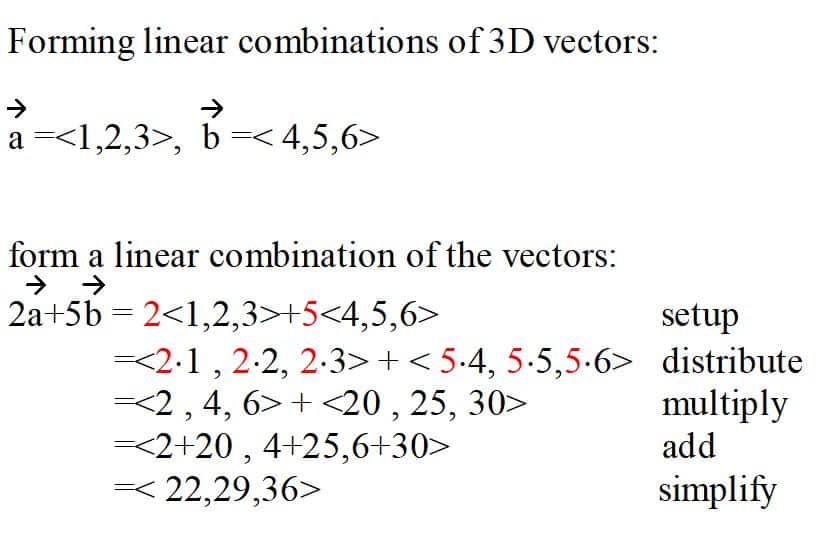Understanding Linear Combination of Two 3D Vectors
Introduction:
In vector algebra, a linear combination involves multiplying vectors by scalars and adding or subtracting the results. In this guide, we’ll explore how to find the linear combination of two 3D vectors.
Step 1: Define the 3D Vectors
Let’s say we have two 3D vectors, A = ⟨a₁, a₂, a₃⟩ and B = ⟨b₁, b₂, b₃⟩.
Step 2: Introduce the Scalars
We introduce two scalars, c₁ and c₂, which will be used to scale vectors A and B respectively.
Step 3: Form the Linear Combination
The linear combination of A and B can be represented as: C = c₁A + c₂B
Expanding this, we get: C = ⟨c₁a₁ + c₂b₁, c₁a₂ + c₂b₂, c₁a₃ + c₂b₃⟩
Conclusion:
The linear combination of two 3D vectors A and B, scaled by c₁ and c₂, results in a new 3D vector C with components ⟨c₁a₁ + c₂b₁, c₁a₂ + c₂b₂, c₁a₃ + c₂b₃⟩.
Specific Example: Linear Combination of Two 3D Vectors
Introduction:
Let’s delve into a specific example to better understand the concept of linear combination of two 3D vectors.
Step 1: Define the 3D Vectors
We have two 3D vectors, A = ⟨2, 3, 4⟩ and B = ⟨1, -1, 2⟩.
Step 2: Choose the Scalars
Let’s choose scalars c₁ = 3 and c₂ = -2.
Step 3: Calculate the Linear Combination
We’ll find the linear combination C = c₁A + c₂B.
Expanding this, we get: C = ⟨3×2 + (-2)×1, 3×3 + (-2)×(-1), 3×4 + (-2)×2⟩
Simplifying, C = ⟨6 – 2, 9 + 2, 12 – 4⟩
Result: C = ⟨4, 11, 8⟩
Conclusion:
By choosing specific scalars c₁ = 3 and c₂ = -2, the linear combination of the 3D vectors A = ⟨2, 3, 4⟩ and B = ⟨1, -1, 2⟩ results in a new 3D vector C = ⟨4, 11, 8⟩.

